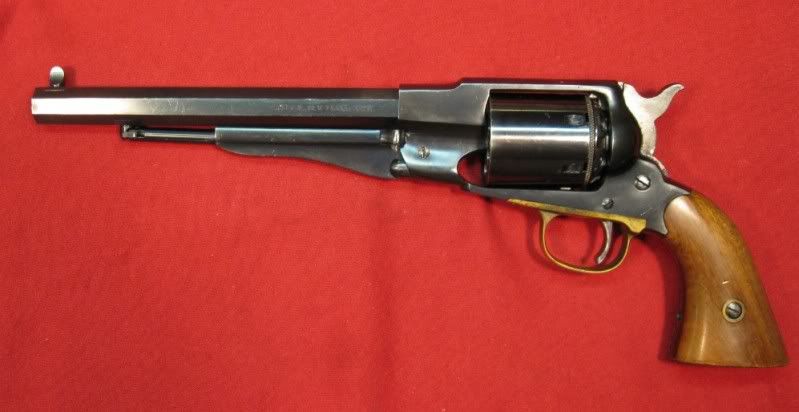Pond James Pond
New member
Apologies in advance but the more I learn about BP shooting the more I realise I don't know and it's frying my brain!!
So, I've been researching the Remington Revolving Carbine for a little while now. It is marketed as a .44 cal. However, it takes round-balls at .454 cal.
Being a revolver this is because it is loaded into the cylinder which will direct the bullet in to the forcing cone and rifling. The .44 cal apparently comes from the land to land diameter in the bore.
However, then come conicals. They could also run with the 1:38 twist (and are perhaps even better suited), but at what diameter?
Same for a possible purchase of the Smith carbine or Hawken in .50cal.
Same problems!
What is the rule of thumb for adding diameter or substracting diameter from a given bullet type for a given calibre in Muzzleloading?
Which bullet types need to be over-bore and which under?
How do I know what patch thickness to get?
Do I need a patch or a wad of something?
How big should they be?
Then there seem to be a myriad of lubes!
How much lube do patches and bullets need and which type?
So, I've been researching the Remington Revolving Carbine for a little while now. It is marketed as a .44 cal. However, it takes round-balls at .454 cal.
Being a revolver this is because it is loaded into the cylinder which will direct the bullet in to the forcing cone and rifling. The .44 cal apparently comes from the land to land diameter in the bore.
However, then come conicals. They could also run with the 1:38 twist (and are perhaps even better suited), but at what diameter?
Same for a possible purchase of the Smith carbine or Hawken in .50cal.
Same problems!
What is the rule of thumb for adding diameter or substracting diameter from a given bullet type for a given calibre in Muzzleloading?
Which bullet types need to be over-bore and which under?
How do I know what patch thickness to get?
Do I need a patch or a wad of something?
How big should they be?
Then there seem to be a myriad of lubes!
How much lube do patches and bullets need and which type?

